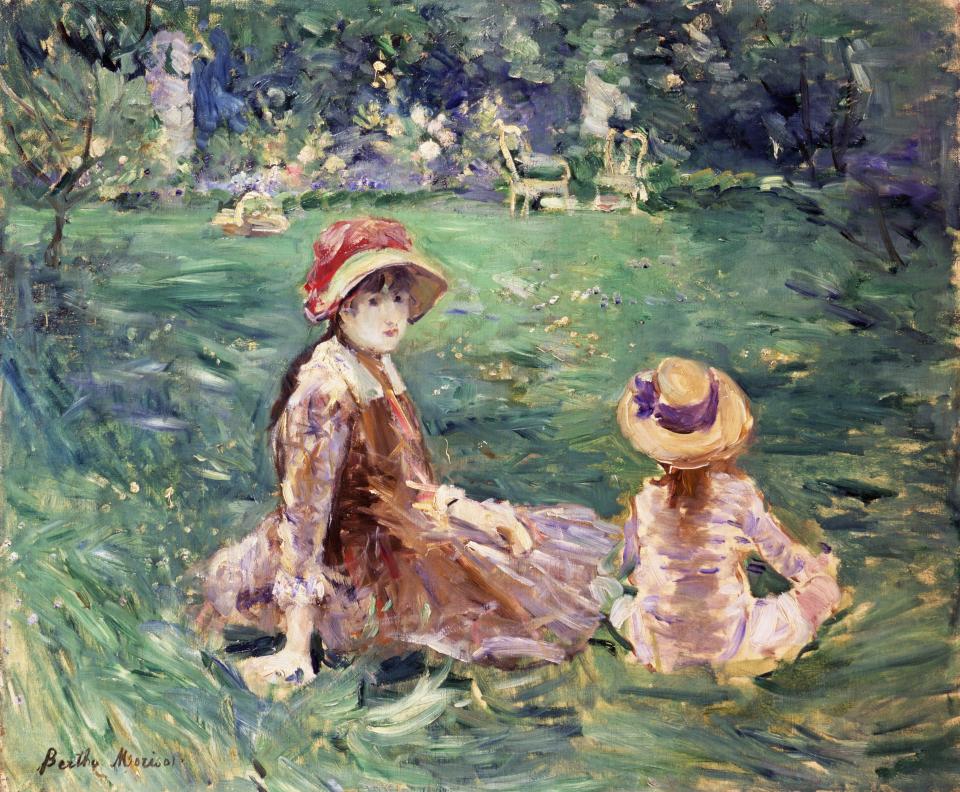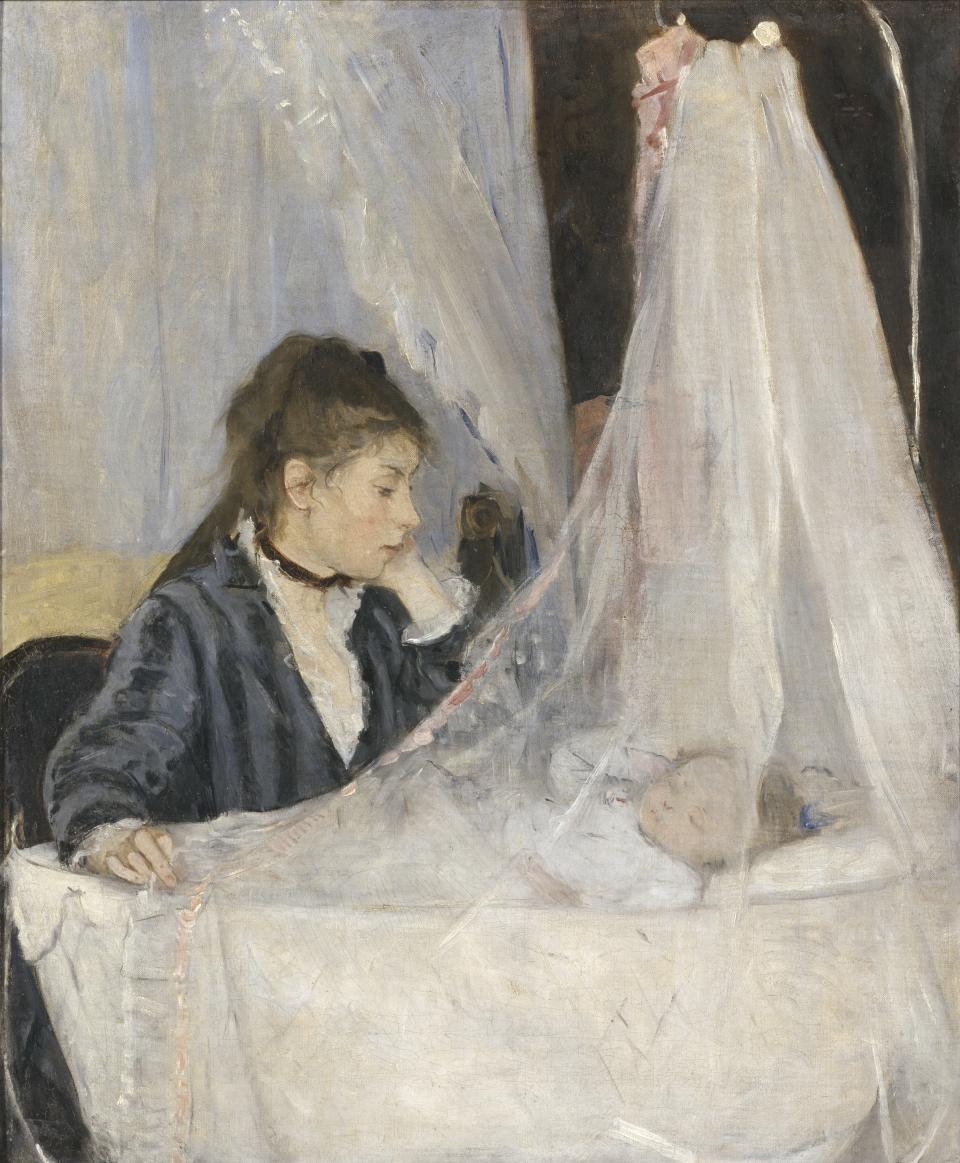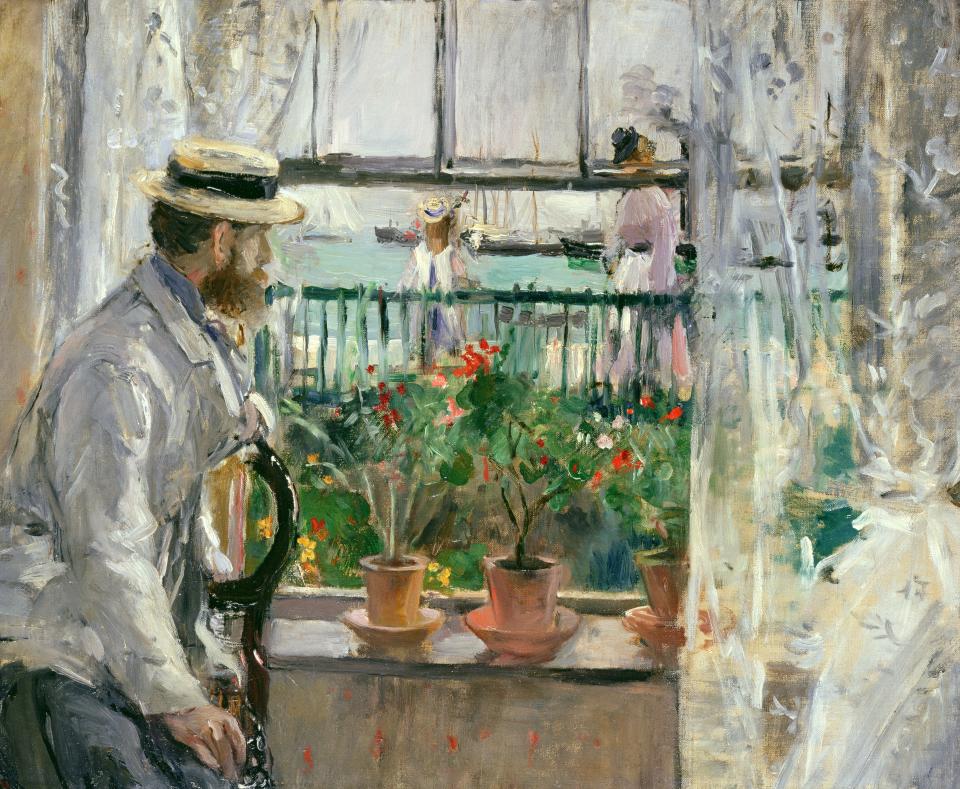You’ve Heard of Monet, Degas, and Renoir—but What About Berthe Morisot?
When artists of the Impressionist movement are listed, inevitably the same, narrow roster of names is tossed around: Claude Monet, Henri Matisse, Edgar Degas, et al. Noticeably, they’re all men. That’s not to say that there weren’t any women of considerable talent during that time making art that pushed the needle forward; rather, their names have been forgotten as time marched on. Mary Cassatt hopefully comes to mind, but beyond that? For most, the list stops there.
If the Barnes Foundation has its way, that’s soon to change thanks to the Philadelphia institution’s new retrospective exhibition that re-examines artist Berthe Morisot’s important contributions to the Impressionist movement. “She was very much respected as a peer by the other male Impressionists,” says Cindy Kang, associate curator at the Barnes. “Renoir was one of her best friends, Monet was a close friend, Manet was her brother-in-law . . . Degas was also a close friend and invited her to join the Impressionists.” At just 23 years old she was invited to exhibit her work at her first Paris Salon and would go on to be included in seven of the eight Impressionist group exhibitions between 1874 and 1886. She was written out of art history not for a lack of talent—The New Yorker’s art critic Peter Schjeldahl calls Morisot “the most interesting artist of her generation,” who “is a visual poet of womanhood like perhaps no other painter before or since,” but for a series of other more complex reasons.

Born into a bourgeois family, Morisot was not under the same financial pressure to sell her paintings as her bohemian “starving artist” contemporaries were, which allowed her more room to take creative risks. She experimented with the concepts of “finished” versus “unfinished” paintings, leaving blotches of raw canvas exposed, and she tested techniques that verged on Abstraction. Toward the end of her career she moved away from the short, sharp brushstrokes that were a signature of the Impressionists in favor of longer, moodier strokes. She was sharply self-critical and was known to destroy paintings that she felt no longer suited her as her style changed. Most of her remaining work went into her family’s collection after her death (she sold just 40 paintings while alive), and later it was donated to the Musée Marmottan in Paris or ended up in private collections, making her work only accessible to scholars and students through reproductions that diminish the quality. Being that the Marmottan holds a large collection of works by Morisot, that may explain why her name is more recognized in France, and a show of this nature is important in rewriting her history in North America and elsewhere.

Of course, sexism also played a heavy hand in diminishing her legacy. Critics at the time didn’t know what to make of her style, which was considerably lighter and more thoughtful than those of her male counterparts. They called her work “flirtatious” and “charming,” while the same techniques by other Impressionists were deemed “vigorous” and “energetic.” But being a female painter worked to her advantage, as well—she eloquently depicted Parisian women and the female form with a sensitivity that her male peers lacked when painting women with the male gaze. And as a working woman herself who delicately balanced the double-life of a working artist and a member of high society, she chose female domestic servants, cooks, nannies, and housekeepers as her subjects, in addition to the highly fashionable women as they dressed for balls and soirées.

Eugene Manet (1834-92) on the Isle of Wight (oil on canvas)
It’s fitting that an exhibition dedicated to taking a second look at Morisot is organized in part by the Barnes Foundation (other participating institutions include the Dallas Museum of Art, Musée national des beaux-arts du Québec, and the Musées d’Orsay et de l’Orangerie, where the show will also travel). The Barnes Foundation’s permanent collection is one of the richest, most remarkable troves of Impressionist, Post-Impressionist, and Early-Modernist art ever assembled across the globe, with the world’s largest holdings of paintings by Renoir and Cézanne, in addition to important works by Matisse, van Gogh, and Modigliani, among others. Assembled by Dr. Albert Barnes between 1912 and 1951, the collection has played an important role in defining the marquee names of the period that are known and loved today. He bought and sold works frequently, arranging his collection into what he called ensembles—groupings of paintings, and later decorative objects, that shared similar composition, palette, lines, and space. One painting by Morisot, Young Woman with a Straw Hat, was one of the first works he acquired, but he ultimately de-accessioned it from the collection and sold it to a dealer as he continued to hone his aesthetic arrangements (that was not to say there was anything in particular he didn’t like about the work—he sold Cézannes, for example, that just didn’t fit with his ensembles). The painting ended up in the National Gallery in Washington, D.C., and has been loaned back to the Barnes for this exhibition, but it’s possible that had Barnes kept that work and acquired a larger quantity of her paintings, perhaps her name might have stuck around.
“Berthe Morisot: Woman Impressionist” is on view at the Barnes Foundation in Philadelphia through January 14, 2019.

